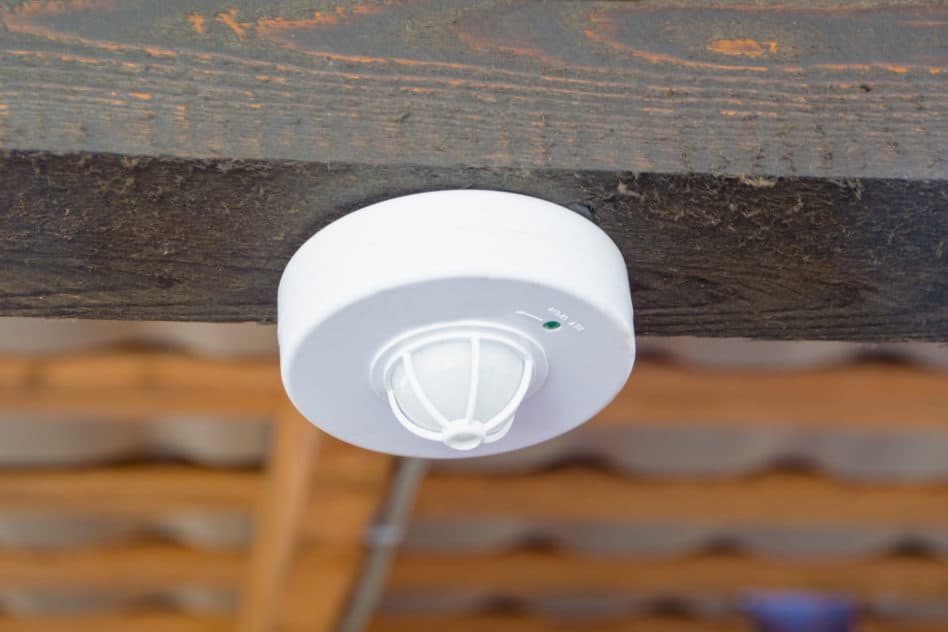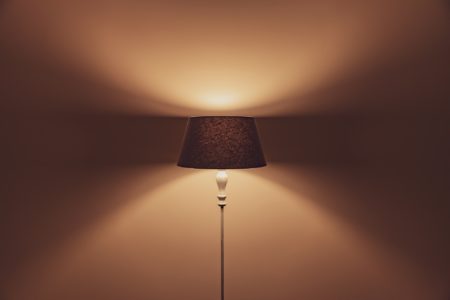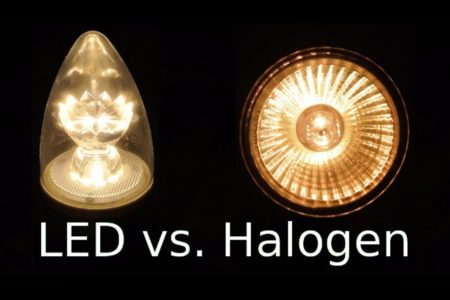Do you want to change your outdoor lighting to LED and are unsure whether the existing motion detector will play along? Or would you like to switch the corridor lighting automatically and ask yourself which motion detector is suitable? In this guide, you’ll learn what to be aware of when motion detectors and LED lights are interacting.
Motion sensors for LED lights
A motion detector basically consists of a motion sensor for motion detection and an electrical switch. If the sensor detects a movement, the switch is activated and the output voltage is switched on. The lamp connected to it lights up. In general, it does not matter whether the motion detector switches an incandescent bulb or LED light.
However, there is an important difference in the construction of a motion detector. The electrical switch for switching the lights on and off can be designed in two different ways:
- Electromechanical relay
- Electronic semiconductor relay
Any type of load can be connected to motion detectors with an electromechanic relay. If the relay is activated during motion detection, two contacts are mechanically connected inside, similar to a normal light switch. Motion detectors with a relay as switching output can be identified by a quiet click sound during the switching process.
Many modern motion detectors, on the other hand, have an electronic switch for switching the load. This is sometimes referred to as a semiconductor relay. Semiconductor relays generate no noise when switching and, unlike a mechanical relay contact, operate completely wear-free. However, electronic switches always require a certain minimum load to function properly.
An insufficient minimum load is often the cause for LED problems with motion detectors.
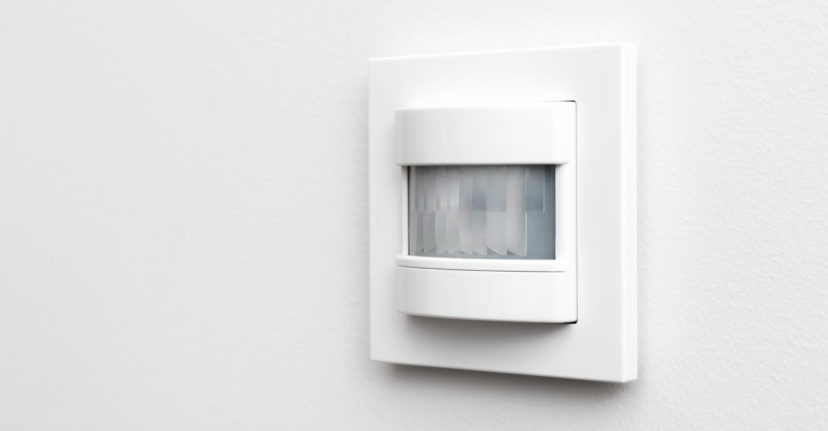
Which motion detectors are suitable for LEDs?
Motion sensors with a relay
Motion detectors with an electromechanical relay (quiet click sound when switching) are basically suitable for any type of lighting. No problems with LED lights are to be expected.
Motion sensors with an electronic switch
For motion detectors with electronic switches, you must pay attention to the load type and minimum load specifications. These can be found either on the detector itself, on the packaging or in the data sheet. Basically, the following load types exist:
- Resistive (ohmic) load
- Inductive load
- Capacitive load
The old incandescent bulbs and halogen lamps are ohmic loads. LED lamps are capacitive loads due to the integrated power supply. If the electronic switch of the motion detector is only suitable for resistive loads, there is a high chance that problems will occur when connecting LED lamps.
In addition to the load type, you must also pay attention to the minimum load of the motion detector. This is often the case especially with already installed detectors and occur after the LED conversion. For example, an old 60 watts bulb is replaced with a 10 watts LED. Here problems may occur if the minimum load of the motion detector is also 10 watts or higher.
For trouble-free LED operation, the motion detector must be designed for capacitive loads. The minimum load must be below the power of the connected LEDs. Many LED motion detectors on the market have a minimum load of only 1 watt which makes them suitable for all LED lamps.
Do LED lights work on motion detectors?
You already know which technical details are important for a motion detector to work with LEDs. However, it’s also a question whether LED lights are suitable at all for operation with motion detectors. Old energy-saving lamps were not suitable, because they often took several minutes to reach their full brightness and they only tolerated relatively few switching cycles.
LED lamps, on the other hand, are perfectly suited for operation with motion detectors. LEDs instantly reach their full brightness after switching on and are designed for a large number of switching cycles. However, you should make sure that the motion detector is set up correctly. Incorrect or not optimal settings lead to many unnecessary switching cycles, which affects the LED lifespan.
You can recognize a motion detector that is not adjusted optimally by the fact that the lighting is switched on and off every few minutes. Here it is important to find the optimum brightness threshold, sensitivity and lighting duration for your own needs. The orientation is also crucial and ensures that the lamp is only switched on when someone enters your property, for example.
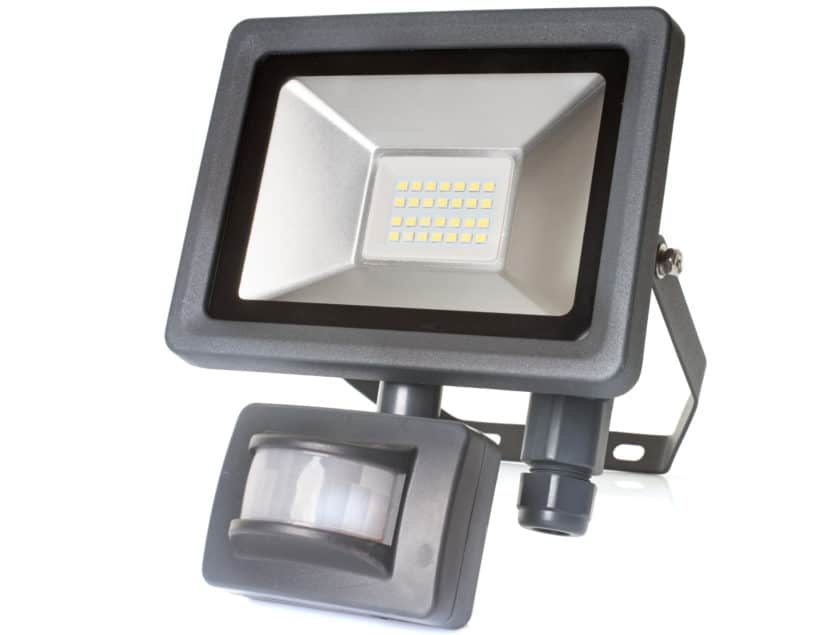
Typical issues with motion sensors and LEDs
Motion detectors with a relay are always suitable for LED operation. If problems occur, the detector is probably defective. The operation of LED lamps on a motion detector with an electronic switch often leads to undesirable side effects. The most common effects are described below.
LED on motion detector is always on
If the LED lamp always lights up and does not turn off, the motion detector probably has an electronic switch. It is highly likely that this is not suitable for capacitive loads such as LEDs or that its minimum load will not be reached.
Check if your motion detector is suitable for capacitive loads such as LED lights and that your lights meet the minimum load.
Motion sensor is not switching at all
If the motion detector does not switch the connected LED lighting at all, the minimum load may not have been reached. The motion detector may also only be designed for resistive loads such as old incandescent bulbs.
Check if your motion detector is suitable for LED lamps. The power consumption of your LED lighting must be above the minimum load.
LED light switches always on and off
If your motion sensor constantly turns on and off, the cause may be an undercut minimum load or unsuitability for capacitive loads such as LED lamps. If you have switched from old light sources to LEDs, you should readjust the sensitivity of the motion detector.
You should also check whether the setting for the sensitivity is exactly on the switching threshold and readjust it.
Conclusion
A motion detector is very convenient to automatically switch the lights. Motion detectors with a relay are also suitable for LED lighting. For motion detectors with an electronic switch you have to pay attention to the compatibility for LED lamps. For proper function, the minimum load of the detector must be below the power of the connected LEDs.
